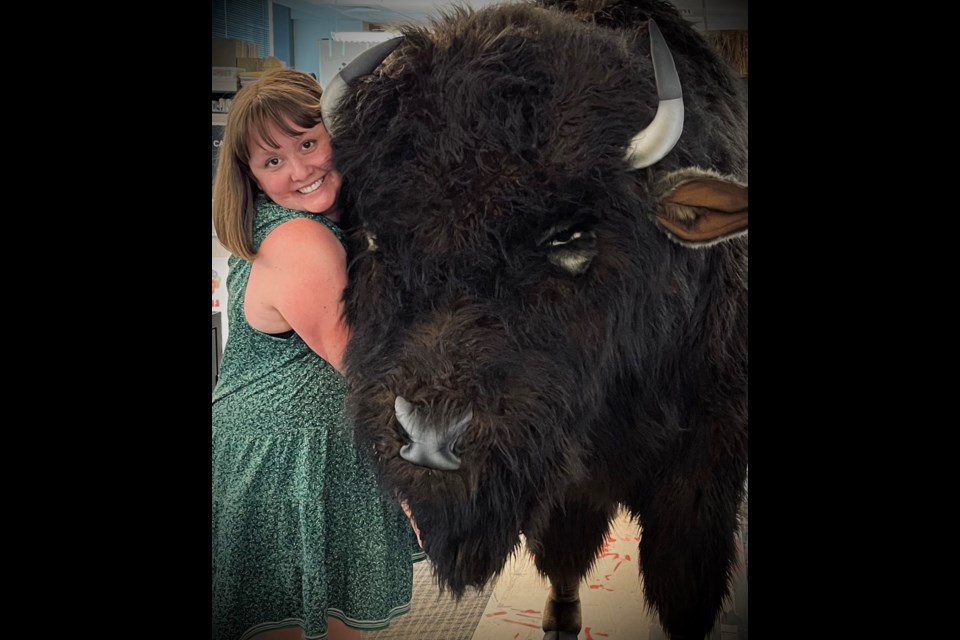The Longmont Museum has a new friend which will help school-aged children learn more about Native American tribes.
The museum is welcoming a new hand-crafted plush bison to take the place of a plywood model that has been around for 20 years.
The bison is currently referred to as Hercules or Herc for short said Ann Macca, curator of education at the museum. However, Macca said the bison may be renamed soon by Steven LaPointe who is a museum consultant from the Lakota tribe.
Herc will be part of an educational program called “Buffalo Harvest.” In the program, school-aged children are taught how Native American tribes on the Great Plains used innovation to survive and thrive. Much of this innovation involved using all the parts of the bison and transforming them into usable objects and food, Macca said.
In addition to Herc, a life-sized plush bison model with all the organs inside will be available for students and camp attendees to learn how Native Americans — to this day — hunt and harvest the bison the way tribal ancestors did, according to Macca.
According to LaPointe, there are over 50 tribes that consider Colorado part of their ancestral homeland. The museum will focus mainly on the Arapaho and Cheyenne tribes for the educational content included in “Buffalo Harvest.”
“We hope that the students who participate in Buffalo Harvest and our other related programs begin to acknowledge and celebrate some of this history, that they will become curious, learn more, and engage with land around them in new ways,” Macca said.
The tribes of the Great Plains were promised the land in the Front Range area in the Treaty of Fort Laramie. This promise was made prior to Colorado gaining statehood. The “Buffalo Harvest” is one way the Longmont Museum is teaching locals about the rich heritage that started before Colorado became a state.
“They are not all gone! Their culture, heritage, and communities live on. They continue to adapt and change. If you are curious and want to learn more then you should visit the Longmont Museum, go to your library, attend the Denver March Powwow, join Longmont Sister Cities Association, or even visit a reservation,” Macca said.



